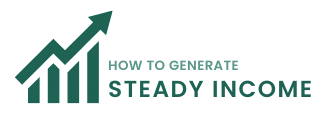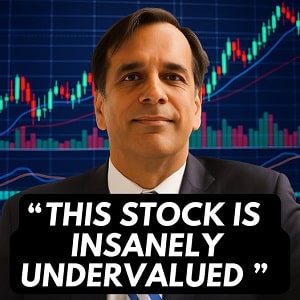Finding low-risk investments with the potential for high returns is crucial for conservative investors seeking stability without sacrificing growth. While the market can be unpredictable, there are several investment options that offer safety, steady income, and the opportunity to outpace inflation. From government-backed securities to bank products, these investments allow individuals to protect their capital while earning a reliable return.
In this article, we’ll explore these top low-risk investments, highlighting their benefits, potential risks, and considerations to help you make informed decisions for your portfolio.
Our Methodology
We did a comprehensive analysis of financial products based on their safety, potential for growth, and ability to outpace inflation. We focused on investments that are backed by the U.S. government or other reliable institutions, offering security and stability for conservative investors. We also considered factors such as liquidity, accessibility, and potential returns in various interest rate environments. Each investment option was evaluated for its benefits, risks, and considerations, ensuring that investors can make informed decisions.
Recommended:
 NEW: Buy and Sell These ‘Trump Stocks’ Immediately
NEW: Buy and Sell These ‘Trump Stocks’ Immediately
President Donald Trump has now signed more executive orders in his first 10 days than any recent president has in their first 100 days. He’s making waves in immigration policy… international trade… and public health, while most investors are frozen, wondering what might happen next. That’s why Professor Joel Litman – who has consulted with both the Pentagon and the FBI – is stepping forward to lay out what he thinks is about to happen… and exactly which types of stocks to buy and sell immediately.
Click here to get the full story.
TIPS (Treasury Inflation-Protected Securities): A Hedge Against Inflation
TIPS are a specific type of Treasury bond designed to protect against inflation. The principal value of TIPS is adjusted based on the changes in the Consumer Price Index (CPI), which measures inflation. As inflation rises, the principal value of TIPS increases, and the interest payments (which are based on the adjusted principal) also rise.
Why Invest in TIPS?
TIPS are an excellent choice for long-term investors who want to protect their portfolios from inflation. Since the principal value of TIPS adjusts with inflation, the interest payments rise accordingly, ensuring your investment keeps pace with rising costs. They are backed by the U.S. government, making them as safe as other Treasury securities. TIPS are particularly useful for individuals concerned about inflation eroding the purchasing power of their savings over time.
Risks and Considerations
The main risk with TIPS is that, in a low-inflation or deflationary environment, the principal value of TIPS may not increase significantly, and the returns could underperform other fixed-income investments. Additionally, like other Treasury securities, TIPS are subject to interest rate risk. If interest rates rise, the market value of TIPS may fall, though this is mitigated if you hold the securities until maturity.
Liquidity and Accessibility
TIPS are also highly liquid, and they can be easily bought or sold in the secondary market. You can purchase TIPS directly through TreasuryDirect.gov or through brokers, similar to other Treasury securities. TIPS ETFs are also available, offering another way for investors to gain exposure to these inflation-protected securities without having to buy individual bonds.
Treasury Securities: Low-Risk, Reliable Returns
Treasury securities are some of the safest investments available, as they are backed by the U.S. government. These securities are offered in three types, each with different maturities and interest payment structures:
- T-Bills (Treasury Bills): Short-term securities with maturities of one year or less. They are sold at a discount, and the investor receives the full face value at maturity.
- T-Notes (Treasury Notes): Medium-term securities with maturities ranging from two to ten years. They pay interest every six months and return the principal at maturity.
- T-Bonds (Treasury Bonds): Long-term securities with maturities of ten to thirty years. They also pay semi-annual interest and return the principal at maturity.
Why Invest in Treasury Securities?
Treasury securities offer safety, stability, and predictable returns. Since they are backed by the U.S. government, they carry minimal risk of default. These securities also offer guaranteed interest payments (for T-Notes and T-Bonds) and are exempt from state and local taxes, making them attractive for investors in high-tax states. They are a reliable investment for conservative investors or those seeking steady income, particularly retirees or those looking to preserve capital.
Risks and Considerations
While Treasury securities are low-risk, their returns may be relatively modest compared to more aggressive investments like stocks or corporate bonds. In a low-interest-rate environment, the yields on Treasury securities may not outpace inflation, reducing the purchasing power of your returns. Additionally, Treasury securities are subject to interest rate risk—if interest rates rise, the market value of existing securities may fall. However, this risk is minimized if you hold the securities until maturity, as you will receive the principal back.
Liquidity and Accessibility
Treasury securities are highly liquid, meaning they can be easily bought or sold in the secondary market. They can be purchased directly from the U.S. government through TreasuryDirect.gov or through a broker. Investors who prefer a more passive approach can also invest in Treasury exchange-traded funds (ETFs), which provide exposure to these securities without having to buy individual bonds.
Recommended:
 Claim Marc Chaikin’s Top 10 Stocks for 2025
Claim Marc Chaikin’s Top 10 Stocks for 2025
When this 50-year Wall Street legend releases his “Top Stocks” list for the year ahead, experienced readers drop what they’re doing and go grab a pen and paper. Marc Chaikin’s stock system would’ve helped you identify 44 of the top 50 stocks last year. In 2023, it flashed “bullish” on 44 of the top 50. Today, he wants to hand you two tickers for free.
Certificates of Deposit (CDs): A Low-Risk Investment with Fixed Returns
Certificates of Deposit (CDs) are a popular low-risk investment option offered by banks and credit unions. These time deposits provide a fixed interest rate for a specified term, ranging from a few months to several years. When you invest in a CD, you agree to leave your money in the account for the full term in exchange for a guaranteed return. In return for locking in your funds, you typically receive higher interest rates compared to regular savings or checking accounts.
Why Invest in Certificates of Deposit?
Unlike stocks or bonds, which can fluctuate in value, the interest rate on a CD is fixed and remains the same throughout the term. This provides predictable income, making it a great option for conservative investors or those who value stability.
CDs are also FDIC-insured (up to $250,000 per depositor, per institution), which ensures your investment is protected in the event the bank fails. This government-backed insurance adds an additional layer of security to your investment, making it one of the safest options available.
In general, the longer the term of the CD, the higher the interest rate offered. This allows you to choose a term that suits your financial goals and needs, whether you’re saving for a short-term goal or looking to lock away funds for a longer period to maximize your returns.
Risks and Considerations
While CDs are low-risk, they are not entirely without drawbacks. The most significant risk is the penalty for early withdrawal. If you need to access your funds before the CD matures, you may face a penalty that could reduce or eliminate any interest earned. This makes CDs less flexible compared to savings accounts or money market funds, where you can typically withdraw funds without penalties.
Additionally, while CDs offer fixed returns, they may not keep up with inflation, especially in a low-interest-rate environment. If the rate of inflation is higher than the return on your CD, your purchasing power could decline over time. It’s important to consider the interest rate environment and inflation expectations when choosing a CD term.
Liquidity and Accessibility
The primary downside to CDs in terms of liquidity is the requirement to leave your funds untouched for the duration of the term. This makes CDs less ideal for emergency savings or situations where quick access to funds is necessary. However, if you’re saving for a specific goal with a set time horizon, a CD can be an excellent choice.
For those who may need more flexibility, there are “no-penalty” CDs available, which allow you to withdraw funds without incurring fees, though these typically offer lower interest rates than traditional CDs.
Money Market Funds: A Low-Risk Investment with Steady Returns
Money market funds are a popular low-risk investment option that provides a way to earn modest returns while maintaining liquidity and safety. These funds invest in short-term, highly liquid, and low-risk debt instruments, such as Treasury bills, certificates of deposit (CDs), and commercial paper. They are designed to offer stability and are typically used by investors who want to preserve capital while earning a return that outpaces a traditional savings account.
Why Invest in Money Market Funds?
Money Market Funds invest in short-term government or corporate debt, which is typically very stable and low-risk. The investments held in these funds are usually highly rated and backed by strong institutions, making them relatively safe, especially compared to other types of investments like stocks or corporate bonds.
Additionally, money market funds typically offer higher returns than regular savings accounts or even high-yield savings accounts. While they might not match the returns of more volatile assets, such as equities, they are a suitable choice for investors looking for steady income with low risk.
Risks and Considerations
While money market funds are considered low-risk, they are not risk-free. The returns are relatively modest, and in a low-interest-rate environment, they may not significantly outpace inflation, just like high-yield savings accounts. Furthermore, although rare, money market funds can experience slight declines in value in times of financial stress or if they invest in riskier assets.
Another risk to consider is the possibility of fees. While many money market funds are fee-free, others may charge management fees or have minimum investment requirements, which can reduce overall returns.
Liquidity and Accessibility
You can usually access your funds quickly, making them a good option for emergency savings or short-term investment goals. However, it’s important to note that, depending on the specific money market fund, you might face restrictions on the frequency or method of withdrawals.
Recommended:
Luke Lango just launched his powerful new research service called Auspex Trader. It’s built around a powerful new stock screener designed to find gains like 117%, 65% and 167% in only 30 days. And you can become a charter member for 70% off and test drive it for 90 days.
High-Yield Savings Accounts: A Low-Risk Investment with Modest Returns
High-yield savings accounts (HYSA) provide an excellent low-risk investment option, especially for individuals seeking a safe place to park their money while earning a higher interest rate than traditional savings accounts. These accounts are typically offered by online banks, which can afford to pass on their cost savings from lower overhead expenses to customers in the form of more attractive interest rates.
Why Invest in High-Yield Savings Accounts?
High-yield savings accounts are FDIC-insured, meaning that the U.S. government protects your deposits up to $250,000 per institution. This makes them one of the safest places to store your money, particularly if you want a reliable way to grow your funds without exposure to significant risk.
Additionally, high-yield savings accounts offer competitive interest rates, typically higher than those offered by traditional brick-and-mortar banks. This means you can earn more on your savings without taking on the risks associated with more volatile investments like stocks or bonds. Since these accounts are accessible at any time, they provide both security and liquidity—meaning you can withdraw your money when needed without incurring penalties
Risks and Considerations
Despite the benefits, the returns from high-yield savings accounts can still be relatively low. While the interest rates are higher than those found in standard savings accounts, they often trail behind other low-risk options, such as corporate bonds or ETFs, in terms of potential returns. Additionally, in a low-interest-rate environment, the returns may not significantly outpace inflation, meaning that the purchasing power of your savings may erode over time.
Some banks also charge account fees or have minimum balance requirements, which can eat into your returns if you’re not careful. However, these fees tend to be minimal, and shopping around for a bank that doesn’t charge them can help you maximize your earnings.
Liquidity and Accessibility
Similar to money market funds, You can withdraw funds at any time without facing penalties, making them ideal for short-term savings goals or emergency funds. This flexibility is particularly appealing to those who want to keep their money easily accessible without sacrificing interest earnings.

































